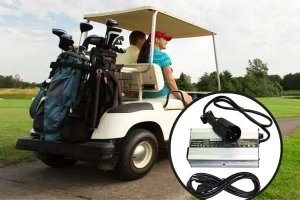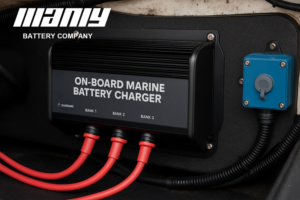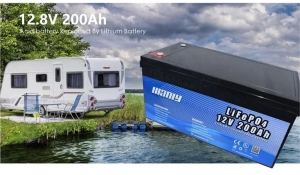2024 What is the best battery for a trolling motor
Table of Contents
- 2024 What is the best battery for a trolling motor
- What is a Trolling Motor Battery
- What Type of Battery for a Trolling Motor?
- What Battery Do I Need for a Trolling Motor?
- What Size Battery for Trolling Motor?
- How Long Will a Trolling Motor Battery Last?
- 12v Trolling Motor Run Time Calculator
- Can You Use a Car Battery for a Trolling Motor?
- How to Connect Trolling Motor to Battery
- Conclusion
- FAQ
- Hot Rearch
- Learn More About Battery
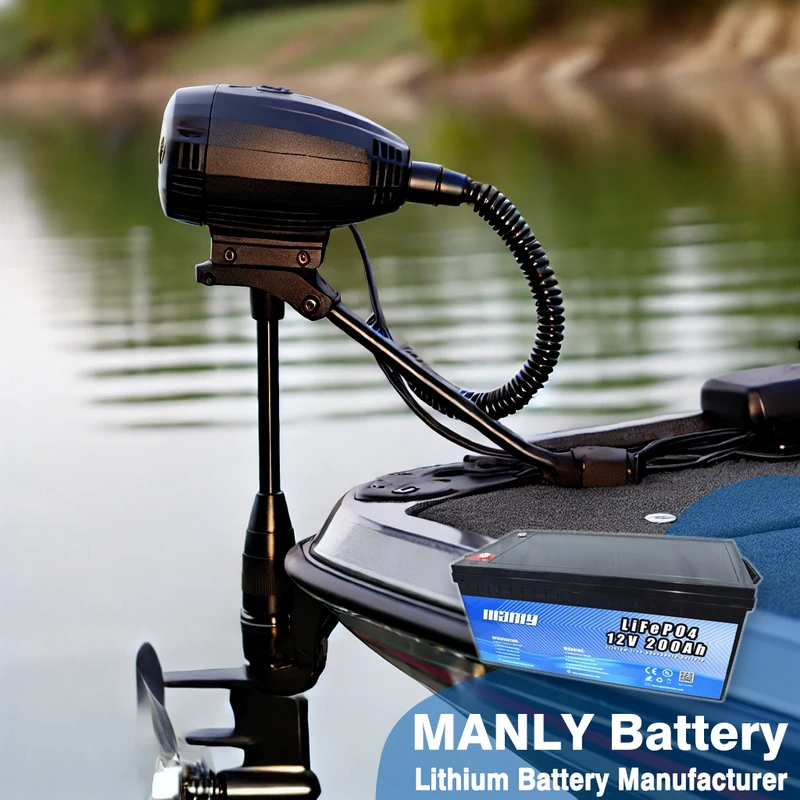
What is a Trolling Motor Battery
A battery for electric trolling motor plays a vital role in ensuring smooth and efficient operation while fishing or cruising. Unlike traditional boat engines, trolling motors are designed for slow and quiet operation, which is perfect for maintaining control and navigating in areas where silence is essential. A high-quality trolling motor battery provides the consistent energy required to keep the motor running for hours, enabling a seamless experience on the water.One of the primary reasons trolling motor batteries are indispensable is their ability to handle deep discharges. Unlike starter batteries, which are designed for short bursts of power, trolling motor batteries excel at delivering steady energy over extended periods. This feature ensures that users can focus on fishing or cruising without worrying about sudden power drops.Additionally, the quiet operation of a trolling motor is directly tied to the performance of its battery. A reliable battery for a trolling motor ensures minimal noise, helping anglers stay undetected and avoid scaring away fish. This performance aspect is especially crucial for activities like trolling, where precise and quiet maneuvers are required.Key Features of Trolling Motor Batteries
- Deep-Cycle Design A good deep cycle battery for trolling motor is engineered to endure repeated deep discharges without compromising its lifespan. This durability makes it ideal for powering trolling motors, which demand consistent and reliable energy over long fishing trips.
- Longevity and Durability For those who need the longest lasting battery for trolling motor, advanced options like lithium-ion or AGM (Absorbed Glass Mat) batteries are excellent choices. These batteries are built to withstand challenging marine environments, including exposure to water, vibrations, and temperature changes, ensuring years of dependable performance.
- Quiet and Efficient Energy Output Trolling motor batteries provide a steady and quiet energy supply, ensuring smooth and noise-free operation. This feature is essential for maintaining focus during fishing or when navigating in areas where silence is critical.
- Compatibility with Trolling Motors These batteries are specifically designed to meet the power requirements of trolling motors, ensuring optimal performance. They are compatible with a wide range of motors and can be chosen based on factors like boat size and intended usage duration.
- Low Maintenance Options Modern trolling motor batteries, such as AGM and lithium-ion types, require minimal maintenance. This convenience allows users to spend more time enjoying their activities rather than worrying about battery upkeep.
What Type of Battery for a Trolling Motor?
Choosing the right battery for a trolling motor is essential for optimal performance, reliability, and longevity. There are three primary types of batteries commonly used for trolling motors: Flooded Lead-Acid, AGM, and Lithium-Ion (LiFePO4). Each type has unique advantages and limitations that cater to different needs and budgets.Flooded Lead-Acid: Budget-Friendly but High Maintenance
Flooded lead-acid batteries are one of the oldest and most widely used battery types. These batteries feature lead plates immersed in liquid electrolytes and are popular for their affordability. A typical flooded deep-cycle battery costs less than $100, making it an attractive option for those on a tight budget.Advantages:- Cost-effective: Among the most affordable options for a battery for electric trolling motor.
- Widely available: Easy to find in most retail stores.
- Maintenance required: Regularly adding distilled water and equalizing charges are necessary to prolong the battery’s life.
- Shorter lifespan: Typically lasts 2-3 years with proper care, making it less durable than other options.
- Risk of spills: The liquid electrolyte poses a risk of leakage, which may require careful handling.
AGM: Reliable and Versatile for Marine Use
Absorbed Glass Mat (AGM) batteries offer an upgrade over traditional flooded lead-acid batteries by incorporating a completely sealed design. The electrolyte in AGM batteries is absorbed into fiberglass mats, preventing spills and reducing maintenance requirements. These batteries are ideal for anglers who prioritize safety and reliability.Advantages:- Maintenance-free: No need to check or refill electrolyte levels.
- Spill-proof design: Safer for handling and marine use.
- Deep cycling: Provides consistent power for extended trolling motor use.
- Higher cost: Typically double the price of a comparable flooded lead-acid battery.
- Sensitive to deep discharge: Complete discharge may cause lasting damage.
Lithium-Ion: Lightweight, Durable, and Long-Lasting
Lithium-ion and LiFePO4 battery for trolling motor systems represent the cutting edge in marine battery technology. While these batteries come with a higher upfront cost, they offer unmatched benefits in terms of weight, efficiency, and lifespan.Advantages:- Extended lifespan: Often lasts 10+ years, outliving other battery types.
- Lightweight: Significantly reduces the overall weight of your boat, improving maneuverability.
- High performance: Provides consistent voltage and long runtimes, even under heavy loads.
- Low maintenance: Requires little to no upkeep compared to flooded or AGM batteries.
- Expensive: The most costly option, although prices are decreasing as adoption increases.
- Compatibility concerns: Some older trolling motors or chargers may not support lithium batteries, requiring additional upgrades.
Which Battery Type Is Best for You?
- For Budget-Conscious Users: Flooded lead-acid batteries are cost-effective but require more maintenance.
- For Reliable Performance: AGM batteries offer a balance of affordability and maintenance-free convenience.
- For Long-Term Investment: Lithium batteries provide unmatched longevity, lightweight performance, and reliability.
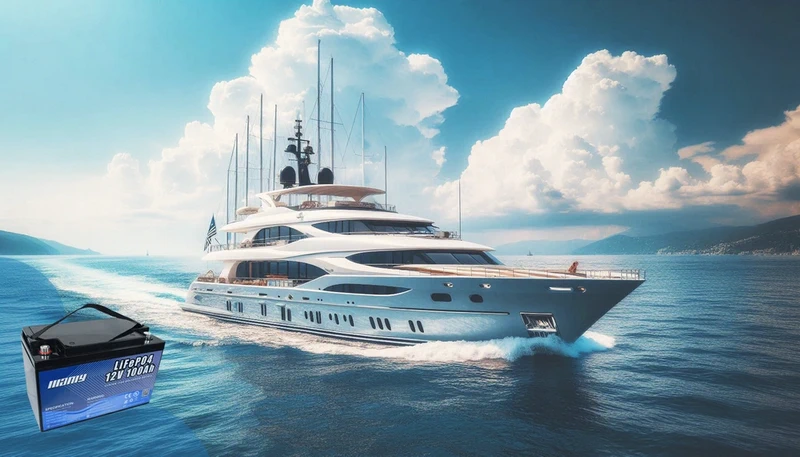
What Battery Do I Need for a Trolling Motor?
Selecting the appropriate battery for your trolling motor is crucial for optimal performance and longevity. The choice depends on various factors, including your boating habits, the power requirements of your trolling motor, and the size of your vessel.How to Choose the Right Battery Based on Your Needs- Assess Your Boating Habits: Determine how frequently and for how long you use your trolling motor. Frequent, extended use may justify investing in a higher-capacity or more durable battery.
- Evaluate Power Requirements: Check the voltage and current draw specifications of your trolling motor. Ensure the battery can supply adequate power for the duration of your typical outings.
- Consider Weight and Space Constraints: Larger batteries offer more capacity but also add weight and occupy more space. Ensure your boat can accommodate the battery without affecting performance or safety.
- Small Boats with Low-Power Motors: For kayaks or small fishing boats using motors with thrust ratings up to 30 lbs, a Group 24 deep-cycle battery is often sufficient. These batteries are compact and provide adequate power for shorter trips.
- Medium-Sized Boats with Moderate-Power Motors: Boats equipped with motors ranging from 30 to 55 lbs of thrust may benefit from a Group 27 battery. This size offers a balance between capacity and size, suitable for moderate usage.
- Large Boats with High-Power Motors: Vessels requiring 70 lbs of thrust or more should consider Group 31 batteries. These provide higher capacity, supporting longer run times necessary for extended outings.
What Size Battery for Trolling Motor?
Battery Group SizesWhen selecting the right trolling motor battery size, understanding battery group sizes is essential. Battery group sizes, such as Group 24, Group 27, and Group 31, refer to the physical dimensions of the battery (length, width, and height) and are standardized across the industry. These sizes ensure the battery fits into the designated compartment on your boat and meets the motor's power requirements.Key Battery Group Sizes for Trolling Motors:
| Battery Group Size | Dimensions (inches) | Amp-Hour Capacity | Suitable For |
|---|---|---|---|
| Group 24 | 10.25 x 6.81 x 8.88 | 70–85 Ah | Small boats with light loads and low-power motors. |
| Group 27 | 12.06 x 6.81 x 8.88 | 85–110 Ah | Medium-sized boats with moderate loads and extended runtime. |
| Group 31 | 13 x 6.81 x 9.44 | 95–125 Ah | Large boats with high-power motors and heavier loads. |
Choosing the Right Size
To determine the appropriate battery size for trolling motor, consider the following factors:1. Motor Power Requirements
The trolling motor's voltage and amp draw will dictate the battery size needed. For example:- A 12-volt motor requiring 20 amps would last approximately 5 hours with a 100 Ah battery (100 Ah ÷ 20 amps = 5 hours).
- High-power motors or longer trips often require larger batteries like Group 27 or Group 31.
2. Boat Size and Weight
Larger boats with heavier loads demand higher-capacity batteries. A Group 24 battery may suffice for kayaks or small fishing boats, but a larger vessel with greater energy demands would benefit from a Group 27 or Group 31 battery.3. Runtime Needs
If you plan extended fishing trips or long hours on the water, prioritize a battery with higher amp-hour capacity. For example, a trolling motor battery size of Group 31 provides longer runtime than Group 24, making it ideal for frequent and prolonged usage.4. Storage Space
Ensure your boat has adequate space to accommodate the battery’s dimensions. While larger batteries like Group 31 offer more power, they also take up more room.Practical Recommendations:
- For occasional use or light fishing trips: Choose a Group 24 battery. It’s compact, lightweight, and cost-effective.
- For moderate use on medium-sized boats: Opt for a Group 27 battery. It balances size and capacity, offering extended runtime.
- For heavy use or large boats: Invest in a Group 31 battery. Its high capacity ensures reliable power for long trips or high-power motors.
How Long Will a Trolling Motor Battery Last?
Average Lifespan by Battery Type
The lifespan of a trolling motor battery depends on its type and maintenance. Below is a comparison of common battery types used in trolling motors:| Battery Type | Lifespan (Years) | Key Characteristics |
|---|---|---|
| Lead-Acid | 2–3 years | Affordable but requires frequent maintenance (e.g., adding water and preventing over-discharge). |
| AGM | 4–6 years | Maintenance-free and spill-proof, but more sensitive to complete discharge. |
| Lithium-Ion | 8–10+ years | High upfront cost but offers the longest lifespan, lightweight design, and efficient deep-cycle performance. |
How Long Will a 12V Battery Run a Trolling Motor?
Factors Affecting Runtime
Several factors influence how long a 12v battery for trolling motor can power your motor:- Battery Capacity: Measured in amp-hours (Ah). Higher capacity means longer runtime.
- Motor Power Consumption: Varies based on throttle level. For example, running at 100% throttle will consume significantly more power than at 30%.
- Additional Devices: Other electronics, such as lights and fish finders, draw power from the same battery, reducing runtime.
- Efficiency: Lithium batteries are more efficient and allow deeper discharge compared to lead-acid batteries, extending runtime.
Example Calculations for Estimating Runtime
Here’s how to calculate the runtime for a 12V trolling motor using a battery with 100Ah capacity:- Using Only the Trolling Motor
- Motor Power Consumption: 20 amps
- Calculation: 100Ah ÷ 20A = 5 hours of runtime
- Including Additional Devices
- Additional Power Consumption: 5 amps (light) + 2 amps (fish finder) = 7 amps
- Total Power Consumption: 20A (motor) + 7A (devices) = 27 amps
- Calculation: 100Ah ÷ 27A = 3.7 hours of runtime (approximately 3 hours and 42 minutes).
Tips to Prolong Battery Life
To maximize the lifespan and runtime of your trolling motor battery, consider the following:- Proper Charging:
- Use a charger compatible with your battery type (e.g., lithium or AGM).
- Avoid overcharging and fully recharge the battery after each use.
- Storage Tips:
- Store in a cool, dry place. Extreme temperatures can degrade battery performance.
- Keep the battery at a partial charge if storing for long periods.
- Regular Maintenance:
- For lead-acid batteries, regularly check and top off water levels with distilled water.
- Clean terminals and ensure connections are tight to avoid voltage drops.
- Avoid Complete Discharge:
- Lead-acid and AGM batteries can suffer damage if discharged below 50%.
- Lithium batteries handle deeper discharges but should still be monitored for optimal lifespan.
12v Trolling Motor Run Time Calculator
Can You Use a Car Battery for a Trolling Motor?
No, using a car battery for a trolling motor is not recommended due to key differences in design, performance, and safety. While car batteries are built for short bursts of high power, trolling motors require deep-cycle batteries that can deliver steady energy for extended periods.Differences Between Car Batteries and Marine Batteries
| Feature | Car Battery | Marine Battery |
|---|---|---|
| Purpose | Designed for short bursts of power to start engines. | Provides consistent, long-term energy for trolling motors and boat electronics. |
| Design | Thinner lead plates for quick energy release. | Thicker lead plates to handle deep discharges and vibrations. |
| Durability | Not built to endure vibrations or movement. | Engineered for marine environments with shock resistance. |
| Discharge Capability | Optimized for shallow discharges. | Designed for deep-cycle use, allowing extended runtime. |
Why Marine Batteries Are Better Suited for Trolling Motors
- Consistent Power Delivery Marine batteries, especially deep-cycle models, provide steady and reliable energy, ensuring your trolling motor performs consistently over long periods. Car batteries, in contrast, are designed to deliver quick bursts of power and quickly lose efficiency during sustained use.
- Extended Lifespan in Marine Conditions Marine batteries are built with thicker lead plates and corrosion-resistant materials, making them ideal for the harsh conditions of boating, including exposure to water, humidity, and vibrations. Car batteries are more prone to failure in such environments.
- Safety Considerations Using a car battery on a boat increases the risk of acid leakage and gas buildup due to inadequate sealing and ventilation. Marine batteries are designed with safety features, including sealed designs to prevent spills and vents to manage gas release.
Potential Risks of Using a Car Battery for a Trolling Motor
- Reduced Runtime Car batteries have limited capacity and are not optimized for the continuous power demands of trolling motors. This could lead to shorter outings and interruptions during use.
- Damage to the Battery Car batteries are not designed for deep discharges. Frequent deep cycling can damage the battery, reducing its lifespan significantly.
- Safety Hazards The lack of proper sealing and ventilation in car batteries can lead to acid leaks or gas buildup, posing safety risks to the boat and its passengers.
Recommended Alternatives
- Deep-Cycle Marine Batteries These are the best choice for trolling motors, offering steady power, long runtime, and durability under marine conditions.
- Lithium-Ion Batteries A high-performance option providing lightweight, efficient, and long-lasting energy, though more expensive upfront.
- AGM or Gel Batteries Maintenance-free and spill-proof, these are reliable and safer options for trolling motors.
How to Connect Trolling Motor to Battery
Properly connecting your trolling motor to its battery is essential for safe and efficient operation. Following a systematic approach ensures both performance and safety.Step-by-Step InstructionsTools Required:- Marine-grade wiring and connectors: Ensure they are rated for your system's voltage and amperage.
- Circuit breaker: To protect against electrical faults.
- Wrench or pliers: For securing connections.
- Heat shrink tubing or electrical tape: For insulating connections.
- Position the Battery: Place the battery in a secure, ventilated compartment on your boat.
- Install the Circuit Breaker: Connect the circuit breaker to the positive (+) terminal of the battery. This protects the system from potential electrical faults.
- Connect the Positive Lead: Attach the trolling motor's positive (+) red lead to the other terminal of the circuit breaker.
- Connect the Negative Lead: Attach the trolling motor's negative (-) black lead directly to the battery's negative (-) terminal.
- Secure All Connections: Tighten all connections using a wrench or pliers. Ensure they are firm to prevent any loosening during operation.
- Insulate Exposed Wires: Use heat shrink tubing or electrical tape to cover any exposed wiring, protecting against moisture and potential short circuits.
- Verify Polarity: Always ensure the positive (+) and negative (-) leads are connected to the corresponding battery terminals to avoid reverse polarity issues.
- Disconnect When Not in Use: For safety reasons, disconnect the motor from the battery when not in use or while charging the battery.
- Use Appropriate Wire Gauge: Adhere to the manufacturer's recommendations for wire gauge to handle the system's voltage and amperage, minimizing voltage drop.
- Install in Ventilated Areas: Place the battery in a ventilated compartment to prevent gas accumulation and overheating.
- Regularly Inspect Connections: Periodically check all connections for corrosion or looseness, addressing any issues promptly to maintain system integrity.


